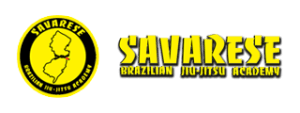Merging defense and offense in BJJ
Merging defense and offense in BJJ
Merging defense and offense in BJJ becomes very important as you move up the ranks of our art. Here are our thoughts on this at Savarese BJJ Academy (www.bergencountybjj.com). Merging defense and offense: When an opponent attacks with a given move your first responsibility is to stop that move. Put your shields up and blunt the attack. But the second you’ve done so, don’t congratulate yourself on your defensive success. Immediately get to work on counter offense. One of the most profitable times to attack an opponent is in the immediate aftermath of a failed attack. Why? Because in most cases his posture and stance will be broken and posture and stance are the basis of defense. Take advantage of that window of opportunity and get to work. Strong defense is a wonderful thing, but even better is strong defense as a prelude to offense. The front headlock position for example is one of these areas. Counter your opponents shot with a hard sprawl and grab that coveted front headlock position. The options available from there are plentiful. First you can spin and take their back. Lock up that body triangle and start attacking the neck. Your changes of getting that choke will improve greatly with the body triangle. Front chokes like the guillotine and arm-in guillotine are also there. Put these together and watch your BJJ grow!
